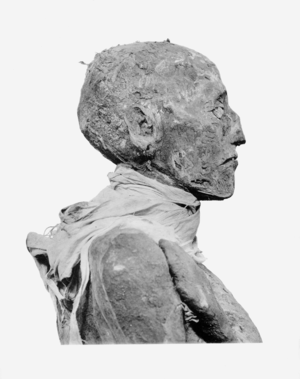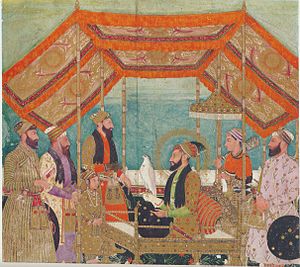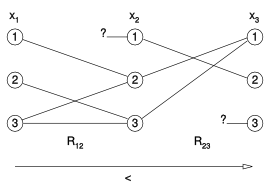[caption id="" align="aligncenter" width="450"]

Portrait of Jane Austen, from the memoir by J. E. Austen-Leigh. All other portraits of Austen are generally based on this, which is itself based on a sketch by Cassandra Austen (Photo credit: Wikipedia)[/caption]
The
reception history of Jane Austen follows a path from modest fame to wild popularity. Jane Austen (1775–1817), the author of such works as
Pride and Prejudice (1813) and
Emma (1815), has become one of the best-known and widely read novelists in the English language.
[1] Her novels are the subject of intense scholarly study and the centre of a diverse fan culture.
During her lifetime, Austen's novels brought her little personal fame. Like many women writers, she chose to publish anonymously and it was only among members of the aristocracy that her authorship was an open secret. At the time they were published, Austen's works were considered fashionable by members of high society but received few positive reviews. By the mid-19th century, her novels were admired by members of the literary elite who viewed their appreciation of her works as a mark of cultivation. The publication in 1870 of her nephew's
Memoir of Jane Austenintroduced her to a wider public as an appealing personality—dear, quiet aunt Jane—and her works were republished in popular editions. By the start of the 20th century, competing groups had sprung up—some to worship her and some to defend her from the "teeming masses"—but all claiming to be the true Janeites, or those who properly appreciated Austen.
Early in the 20th century, scholars produced a carefully edited collection of her works—the first for any British novelist—but it was not until the 1940s that Austen was widely accepted in academia as a "great English novelist". The second half of the 20th century saw a proliferation of Austen scholarship, which explored numerous aspects of her works: artistic, ideological, and historical. With the growing professionalisation of university English departments in the first half of the 20th century, criticism of Austen became progressively more esoteric and, as a result, appreciation of Austen splintered into distinctive high culture and popular culture trends. In the late 20th century, fans founded Jane Austen societies and clubs to celebrate the author, her time, and her works. As of the early 21st century, Austen fandom supports an industry of printed sequels and prequels as well as television and film adaptations, which started with the 1940
Pride and Prejudice and evolved to include the 2004 Bollywood-style production
Bride and Prejudice.
Background
Jane Austen lived her entire life as part of a large and close-knit family on the lower fringes of the English gentry.
[2] Her family's steadfast support was critical to Austen's development as a professional writer.
[3] Austen read draft versions of all of her novels to her family, receiving feedback and encouragement,
[4] and it was her father who sent out her first publication bid.
[5] Austen's artistic apprenticeship lasted from her teenage years until she was about thirty-five. During this period, she experimented with various literary forms, including the epistolary novel which she tried and then abandoned, and wrote and extensively revised three major novels and began a fourth. With the release of
Sense and Sensibility (1811),
Pride and Prejudice (1813),
Mansfield Park (1814) and
Emma (1815), she achieved success as a published writer.
Novel-writing was a suspect occupation for women in the early 19th century, because it imperiled their social reputation by bringing them publicity viewed as unfeminine. Therefore, like many other female writers, Austen published anonymously.
[6] Eventually, though, her novels' authorship became an open secret among the aristocracy.
[7] During one of her visits to London, the Prince Regent invited her, through his librarian, James Stanier Clarke,
[8]to view his library at Carlton House; his librarian mentioned that the Regent admired her novels and that "if Miss Austen had any other Novel forthcoming, she was quite at liberty to dedicate it to the Prince".
[9] Austen, who disapproved of the prince's extravagant lifestyle, did not want to follow this suggestion, but her friends convinced her otherwise: in short order,
Emma was dedicated to him. Austen turned down the librarian's further hint to write a historical romance in honor of the prince's daughter's marriage.
[10]
A watercolour sketch of Jane Austen by her sister Cassandra(c. 1804)
In the last year of her life, Austen revised
Northanger Abbey (1817), wrote
Persuasion (1817), and began another novel, eventually titled
Sanditon, which was left unfinished at her death. Austen did not have time to see
Northanger Abbey or
Persuasion through the press, but her family published them as one volume after her death and her brother Henry included a "Biographical Notice of the Author".
[11] This short biography sowed the seeds for the myth of Austen as a quiet, retiring aunt who wrote during her spare time: "Neither the hope of fame nor profit mixed with her early motives ... [S]o much did she shrink from notoriety, that no accumulation of fame would have induced her, had she lived, to affix her name to any productions of her pen ... in public she turned away from any allusion to the character of an authoress."
[12] However, this description is in direct contrast to the excitement Austen shows in her letters regarding publication and profit: Austen was a professional writer.
[13]Austen's works are noted for their realism, biting social commentary, and masterful use of free indirect speech, burlesque and irony.
[14] They critique the novels of sensibility of the second half of the 18th century and are part of the transition to 19th-century realism.
[15] As Susan Gubar and Sandra Gilbert explain, Austen makes fun of "such novelistic clichés as love at first sight, the primacy of passion over all other emotions and/or duties, the chivalric exploits of the hero, the vulnerable sensitivity of the heroine, the lovers' proclaimed indifference to financial considerations, and the cruel crudity of parents".
[16] Austen's plots, though comic,
[17] highlight the way women depend on marriage to secure social standing and economic security.
[18] Like the writings of Samuel Johnson, a strong influence on her, her works are fundamentally concerned with moral issues
1812–1821: Individual reactions and contemporary reviews
Austen's novels quickly became fashionable among opinion-makers, namely, those aristocrats who often dictated fashion and taste. Lady Bessborough, sister to the notorious Georgiana, Duchess of Devonshire, commented on
Sense and Sensibility in a letter to a friend: "it is a clever novel. ... tho' it ends stupidly, I was much amused by it."
[20] The fifteen-year-old daughter of the Prince Regent, Princess Charlotte Augusta, compared herself to one of the book's heroines: "I think Marianne & me are very like in
disposition, that certainly I am not so good, the same imprudence, &tc".
[21] After reading
Pride and Prejudice, playwright Richard Sheridan advised a friend to "[b]uy it immediately" for it "was one of the cleverest things" he had ever read.
[22] Anne Milbanke, future wife of the Romantic poet Lord Byron, wrote that "I have finished the Novel called Pride and Prejudice, which I think a very superior work." She commented that the novel "is the most
probable fiction I have ever read" and had become "at present the fashionable novel".
[23] The Dowager Lady Vernon told a friend that
Mansfield Park was "[n]ot much of a novel, more the history of a family party in the country, very natural"—as if, comments one Austen scholar, "Lady Vernon's parties mostly featured adultery."
[24] Lady Anne Romilly told her friend, the novelist Maria Edgeworth, that "[
Mansfield Park] has been pretty generally admired here" and Edgeworth commented later that "we have been much entertained with Mansfield Park".
[24]Despite these positive reactions from the elite, Austen's novels received relatively few reviews during her lifetime:
[25] two for
Sense and Sensibility, three for
Pride and Prejudice, none for
Mansfield Park, and seven for
Emma. Most of the reviews were short and on balance favourable, although superficial and cautious.
[26] They most often focused on the moral lessons of the novels.
[27]Moreover, as Brian Southam, who has edited the definitive volumes on Austen's reception, writes in his description of these reviewers, "their job was merely to provide brief notices, extended with quotations, for the benefit of women readers compiling their library lists and interested only in knowing whether they would like a book for its story, its characters and moral".
[28] Asked by publisher John Murray to review
Emma, famed historical novelist Walter Scott wrote the longest and most thoughtful of these reviews, which was published anonymously in the March 1816 issue of the
Quarterly Review. Using the review as a platform from which to defend the then disreputable genre of the novel, Scott praised Austen's works, celebrating her ability to copy "from nature as she really exists in the common walks of life, and presenting to the reader ... a correct and striking representation of that which is daily taking place around him".
[29] Modern Austen scholar William Galperin has noted that "unlike some of Austen's lay readers, who recognized her divergence from realistic practice as it had been prescribed and defined at the time, Walter Scott may well have been the first to install Austen as the realist par excellence".
[30] Scott wrote in his private journal in 1826, in what later became a widely quoted comparison:
Also read again and for the third time at least Miss Austen's very finely written novel of Pride and Prejudice. That young lady had a talent for describing the involvement and feelings and characters of ordinary life which is to me the most wonderful I ever met with. The Big Bow-wow strain I can do myself like any now going, but the exquisite touch which renders ordinary commonplace things and characters interesting from the truth of the description and the sentiment is denied to me. What a pity such a gifted creature died so early![31][32]

Novelist Walter Scott praised Austen's "exquisite touch which renders ordinary commonplace things ... interesting".
[31] and
Persuasion, published together posthumously in December 1817, were reviewed in the
British Critic in March 1818 and in the
Edinburgh Review and Literary Miscellany in May 1818. The reviewer for the
British Critic felt that Austen's exclusive dependence on realism was evidence of a deficient imagination. The reviewer for the
Edinburgh Review disagreed, praising Austen for her "exhaustless invention" and the combination of the familiar and the surprising in her plots.
[33] Overall, Austen scholars have pointed out that these early reviewers did not know what to make of her novels—for example, they misunderstood her use of irony. Reviewers reduced
Sense and Sensibility and
Pride and Prejudice to didactic tales of virtue prevailing over vice.
[34]In the
Quarterly Review in 1821, the English writer and theologian Richard Whately published the most serious and enthusiastic early posthumous review of Austen's work. Whately drew favourable comparisons between Austen and such acknowledged greats as Homer and Shakespeare, praising the dramatic qualities of her narrative. He also affirmed the respectability and legitimacy of the novel as a genre, arguing that imaginative literature, especially narrative, was more valuable than history or biography. When it was properly done, as in Austen, Whately said, imaginative literature concerned itself with generalised human experience from which the reader could gain important insights into human nature; in other words, it was moral.
[35] Whately also addressed Austen's position as a female writer, writing: "we suspect one of Miss Austin's [
sic] great merits in our eyes to be, the insight she gives us into the peculiarities of female characters. ... Her heroines are what one knows women must be, though one never can get them to acknowledge it."
[36] No more significant, original Austen criticism was published until the late 19th century: Whately and Scott had set the tone for the Victorian era's view of Austen





































